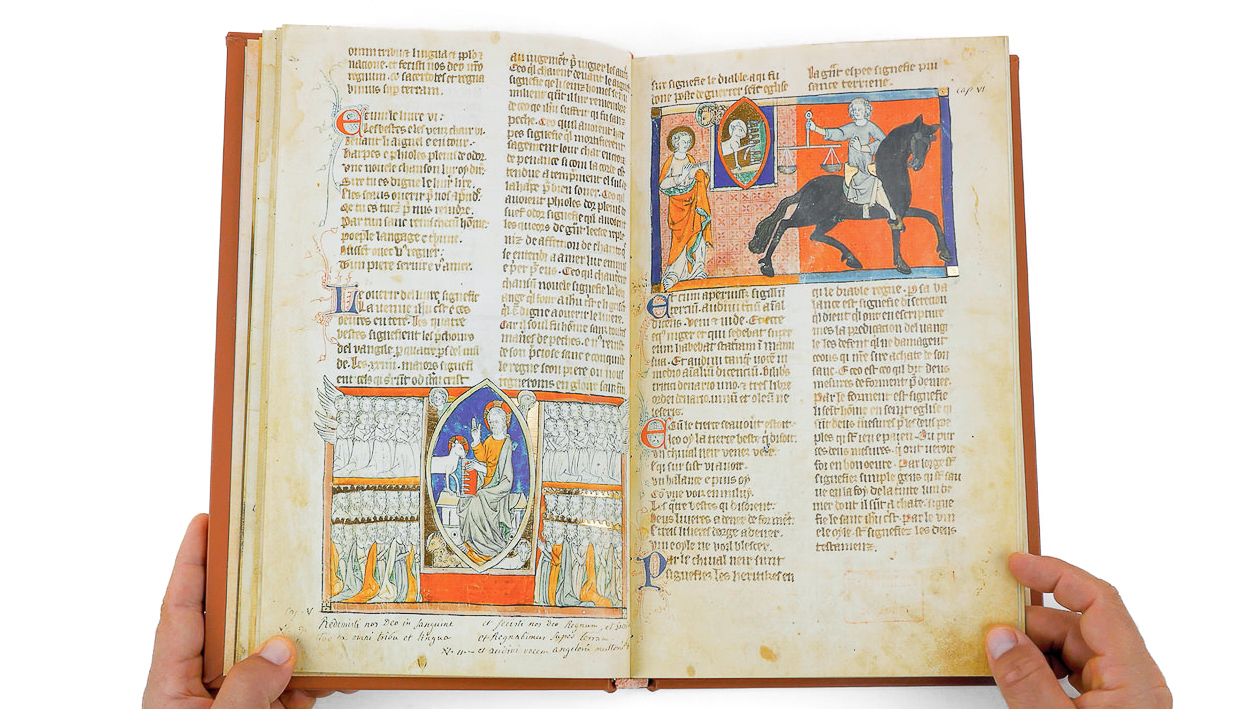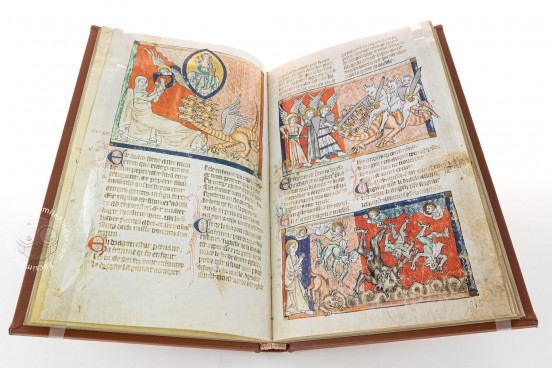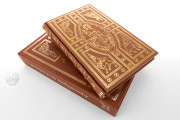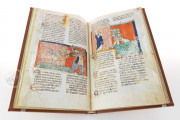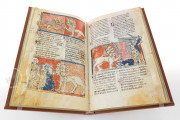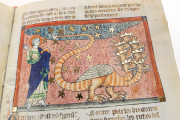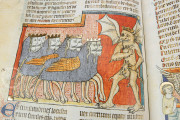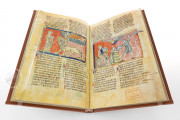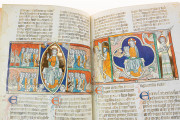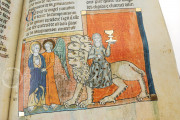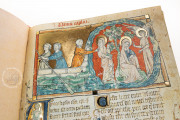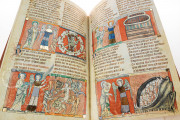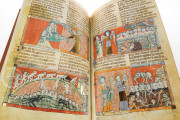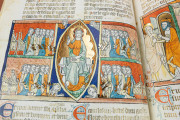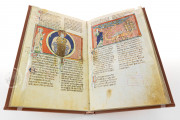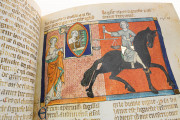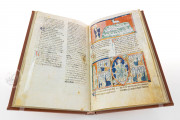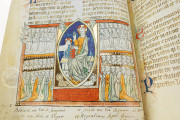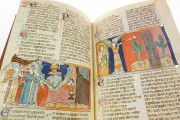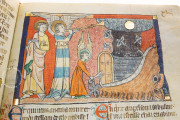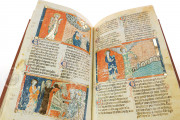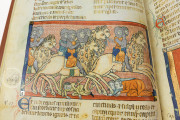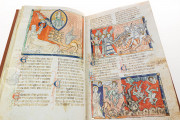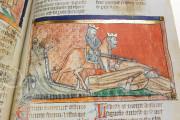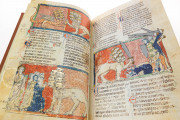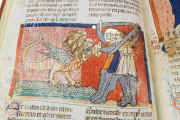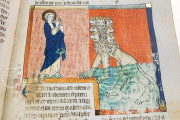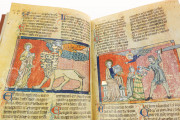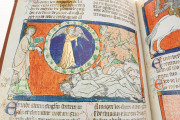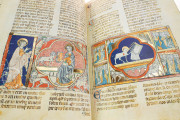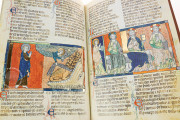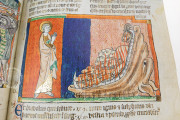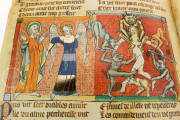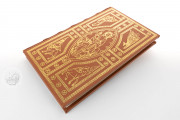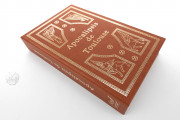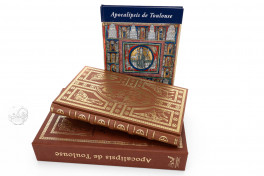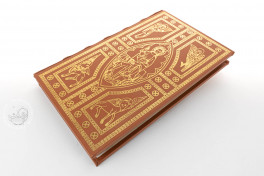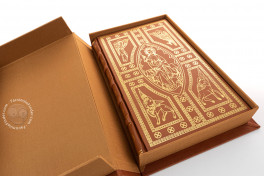Named after its current home, the Toulouse Apocalypse is a magnificent manuscript of the Christian biblical book of the Apocalypse. Made in England—probably London—around 1330-1340, it is a significant example of the Anglo-Norman tradition of Apocalypse illumination. The manuscript boasts one nearly full-page miniature and 120 smaller miniatures, making it one of the most extensively illustrated examples of the genre. While the patronage of the codex is unknown, its captivating visual cycle offers insight into the transformations in luxury book ownership and patronage in the late Middle Ages.
The Toulouse Apocalypse brings together the Latin text of the Apocalypse—Saint John the Divine's vision of events leading to the end of time—a metrical translation of John's text into Anglo-Norman (the French spoken in England at the time), and an Anglo-Norman prose commentary. There follows an Anglo-Norman verse translation of the Visio Pauli (Vision of Paul), an apocryphal account of Saint Paul's vision of heaven and hell.
Apocalyptic Drama in Pictures
The manuscript's decorative program, with 106 Apocalypse miniatures and fifteen illustrations of the Vision of Paul, is closely related in iconography and style to two contemporary English Apocalypses (the Corpus Apocalypse and London, British Library, MS Add. 18633). As in the Cambridge and London manuscripts, the miniatures in the Toulouse Apocalypse span the width of the two columns of text and are a third to a half page in height, with the Heavenly Jerusalem being the only image taller than it is wide (fol. 53r).
Each scene introduces the illustrated section of the text and its commentary. The oversized gestures of the protagonists and the vibrant palette rich in saturated oranges and blues create a visual intensity appropriate to the source material. Some frames, patterned backgrounds, and details are enriched with touches of shimmering gold.
Writing the End of the World
The text of the Apocalypse was written by a single scribe in two columns in Gothic Textualis script. The Visio Pauli, written with lighter ink, is likely the work of a second scribe. Each section of text opens with a pen-flourished initial alternating between red and blue. When the length of the two columns is uneven, a miniature might have a stepped upper or lower edge to fill the space (e.g., on fol. 40r).
A Journey from England to France
The codex probably remained in England until it came into the possession of the convent of the Augustinians in Toulouse in the early eighteenth century. The convent was secularized in 1790 and opened to the public as the Musée des Augustins in 1795. Its library joined the collection of the Bibliothèque municipale of Toulouse (now Bibliothèque de Toulouse) in the nineteenth century. The manuscript numbers among the treasures of its Bibliothèque d'Etude et du Patrimoine.
We have 1 facsimile edition of the manuscript "Toulouse Apocalypse": Apocalipsis de Toulouse facsimile edition, published by Piaf, 2020
Request Info / Price
